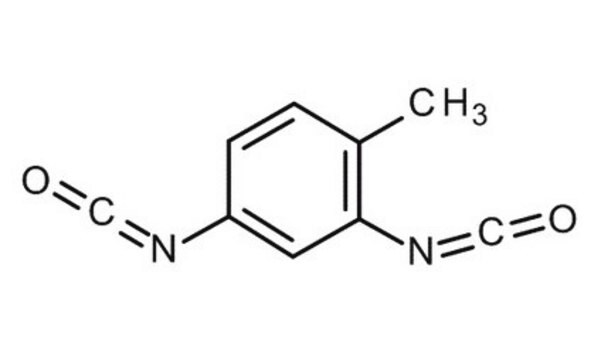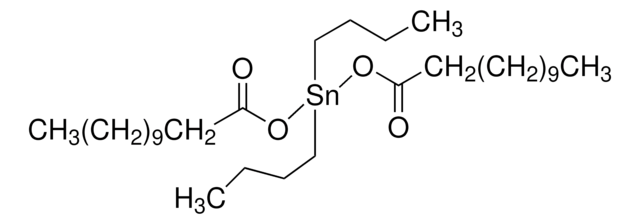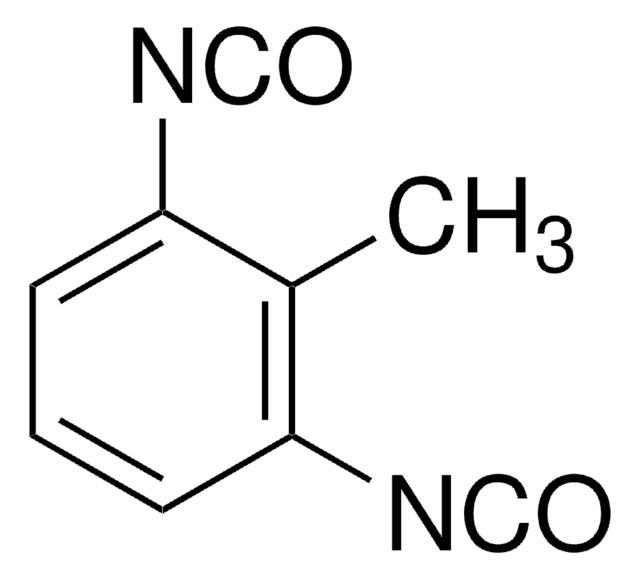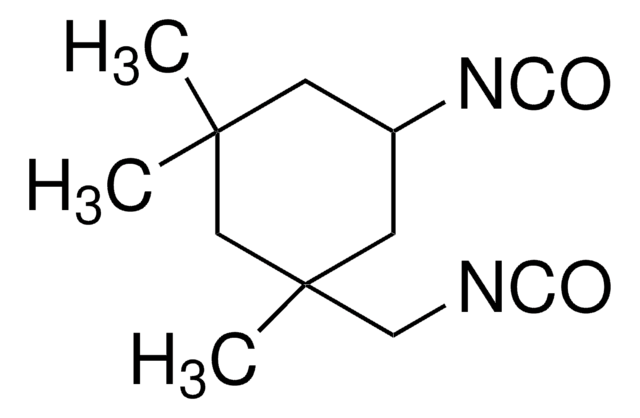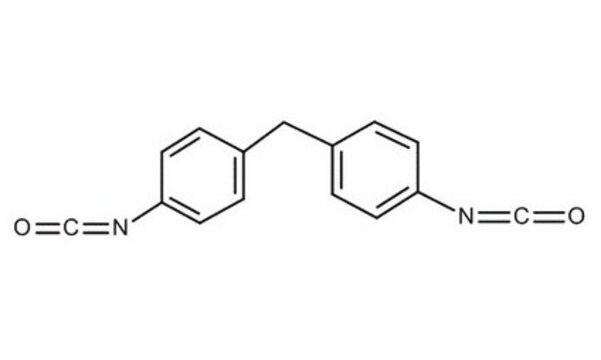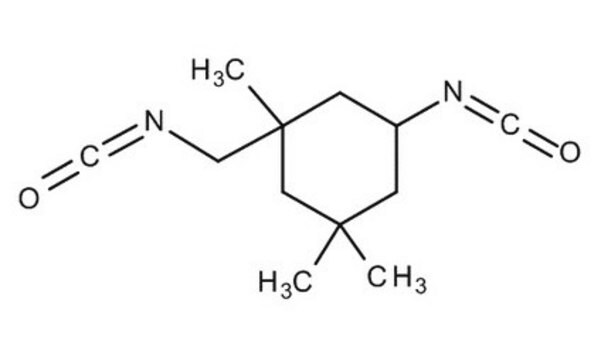216836
Tolylene-2,4-diisocyanate
technical grade, 80%
Synonym(s):
2,4-Diisocyanatotoluene, 4-Methyl-1,3-phenylene diisocyanate, 4-Methyl-m-phenylene diisocyanate, BASF LUPRANATE T80, TDI
About This Item
Recommended Products
grade
technical grade
Quality Level
vapor density
6 (vs air)
vapor pressure
0.03 mmHg ( 25 °C)
Assay
80%
autoignition temp.
>1148 °F
expl. lim.
9.5 %
refractive index
n20/D 1.568 (lit.)
bp
115-120 °C/10 mmHg (lit.)
mp
20-22 °C (lit.)
solubility
acetone and ethanol: soluble(lit.)
alcohol: miscible(lit.)
benzene: soluble(lit.)
carbon tetrachloride: miscible(lit.)
chlorobenzene: miscible(lit.)
diethyl ether: miscible(lit.)
kerosene: miscible(lit.)
olive oil: miscible(lit.)
density
1.225 g/mL at 25 °C
functional group
isocyanate
storage temp.
2-8°C
SMILES string
Cc1ccc(cc1N=C=O)N=C=O
InChI
1S/C9H6N2O2/c1-7-2-3-8(10-5-12)4-9(7)11-6-13/h2-4H,1H3
InChI key
DVKJHBMWWAPEIU-UHFFFAOYSA-N
Looking for similar products? Visit Product Comparison Guide
Other Notes
Legal Information
Signal Word
Danger
Hazard Statements
Precautionary Statements
Hazard Classifications
Acute Tox. 1 Inhalation - Aquatic Chronic 3 - Carc. 2 - Eye Irrit. 2 - Resp. Sens. 1 - Skin Irrit. 2 - Skin Sens. 1 - STOT SE 3
Target Organs
Respiratory system
Storage Class Code
6.1A - Combustible acute toxic Cat. 1 and 2 / very toxic hazardous materials
WGK
WGK 2
Flash Point(F)
269.6 °F - closed cup
Flash Point(C)
132 °C - closed cup
Personal Protective Equipment
Regulatory Listings
Regulatory Listings are mainly provided for chemical products. Only limited information can be provided here for non-chemical products. No entry means none of the components are listed. It is the user’s obligation to ensure the safe and legal use of the product.
PRTR
Class I Designated Chemical Substances
FSL
Group 4: Flammable liquids
Type 3 petroleums
Hazardous rank III
Water insoluble liquid
ISHL Indicated Name
Substances Subject to be Indicated Names
ISHL Notified Names
Substances Subject to be Notified Names
JAN Code
216836-BULK:
216836-1KG:4548173117249
216836-50G:4548173117263
216836-VAR:
216836-250G:4548173117256
Choose from one of the most recent versions:
Already Own This Product?
Find documentation for the products that you have recently purchased in the Document Library.
Customers Also Viewed
Our team of scientists has experience in all areas of research including Life Science, Material Science, Chemical Synthesis, Chromatography, Analytical and many others.
Contact Technical Service
